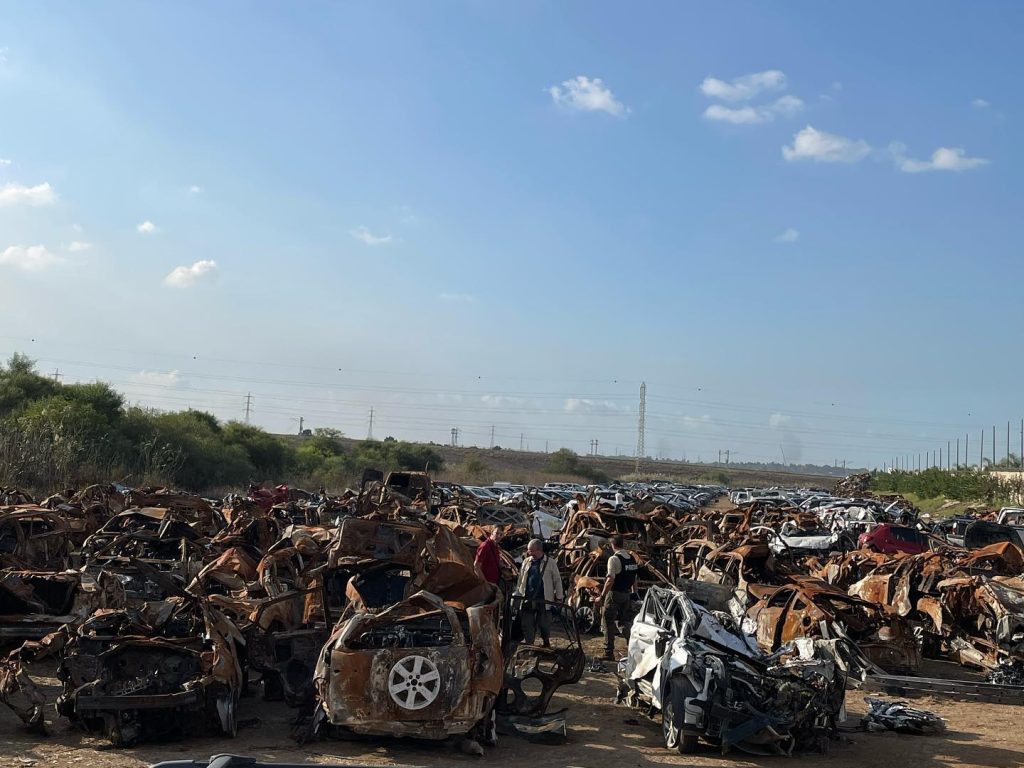A four-day ceasefire between Israel and Hamas began Friday, allowing for an exchange of Israeli hostages in return for Palestinian detainees. The pause in hostilities also allows for humanitarian aid to cross into the Gaza Strip from Egypt.
Hamas released two dozen people on the first day of deal, including 13 Israelis, as well as 10 Thai nationals, and one Filipino. In return, Israel released 39 Palestinian detainees from custody.
Under the initial terms of the ceasefire, Hamas will release 50 Israeli hostages, starting with women and children, of the approximately 240 people kidnapped on October 7. In return, Israel will free three Palestinian detainees for every Israeli who comes home alive. The releases will be staggered over the ceasefire period.
In Edmonton, local reaction to the temporary ceasefire from a Jewish community leader is one of hope, mixed with concern about what the often unpredictable terrorist entity, Hamas, might do.
Chief Executive Officer of the Jewish Federation of Edmonton, Stacey Leavitt-Wright, spoke with HeartlandNews.ca via telephone after she cleared security and while she waited in the airport terminal for her flight from Ben Gurion International Airport in Israel to return home to Edmonton on Thursday.
“We are a people who have to have hope, but I’m very concerned. Certainly, a release of 13 hostages is a start, but it’s a long way to go to 240 [hostages],”
Hamas has a history of breaking ceasefire agreements, including most recently, when it launched a surprise attack on Southwest Israel seven weeks ago, Leavitt-Wright points pointed out.
Leavitt-Wright was in Israel as a participant in the Canadian National Leadership Solidarity Mission, alongside other Canadian leaders from across Canada. She said it was an emotional trip.
“I gained a much deeper understanding of the trauma in Israel; the strength and the unity of the Israeli people to get through this war; and the deeply felt concern for the hostages and their release that is prevalent across the country,” Leavitt-Wright said.
Her trip was filled with harrowing visits – punctuated by the not-too-distant sounds of explosions and of a siren alerting people to rocket fire – to various sites that were attacked on the infamous day. One of the stops on her journey was to Kfar Aza, a kibbutz about 3 kilometres away from the border with the Gaza Strip where approximately 400 people lived prior to one of the October 7th massacres.
Leavitt-Wright said the village is, “stopped in a moment in time and decimated,
“We saw houses that were riddled with bullet holes that clearly were put on fire, and we were told the stories of what the first responders saw when they came upon these houses.
“The smell of the death and the rot is still there seven weeks later, and it’s something that will forever be etched in my mind.”
Leavitt-Wright said she met with the mother of a 26-year-old woman who is presumed taken hostage on October 7. She describes what the mother is dealing with while waiting to find out if she will ever see her daughter again.
“It’s the uncertainty, I mean, not even the Red Cross has access to check on the health and welfare of the hostages.
“It’s not knowing if they’re alive, if they’re in tunnels being moved around night to night, if they’ve seen the light of day, how they’re being treated – being a young woman, that factors into it as well – how their mental health is in all of this,
“So there’s a lot that they’re dealing with and not knowing how long it’s going to take and whether even a ceasefire will hold,” Leavitt-Wright shared.
“On my final day, as a personal day for me, in the country, I visited what’s now called the Square of the Kidnapped, that’s a tribute and vigil for the hostages. Everybody is praying for their release and their safe return home,” Leavitt-Wright said. This visit is documented in the above Facebook post.
“I came to bear witness, I came to show solidarity with my people, I gained a deeper understanding of the impact of this on the national psyche.” Leavitt-Wright said.
She says she, “really got a sense, however, of the strength, of the unity, of the people, and the heroism of the many who tried valiantly to save people that day.”
Ultimately, Leavitt-Wright believes a lasting peace can only be achieved once Hamas is eliminated or surrenders.
“If Hamas would surrender and leave Gaza right now, it would certainly reduce the casualties.
“I think we need to we need to rid Gaza of the terrorist entity Hamas and there needs to be a willingness to coexist alongside the State of Israel, a state of the Jewish people. And I think that once we have that, we can start to have conversations about a lasting peace.”
Below: The featured image was posted to Facebook by Leavitt-Wright where she describes, “one of a few fields where cars from the Nova festival are being combed through for DNA.”







